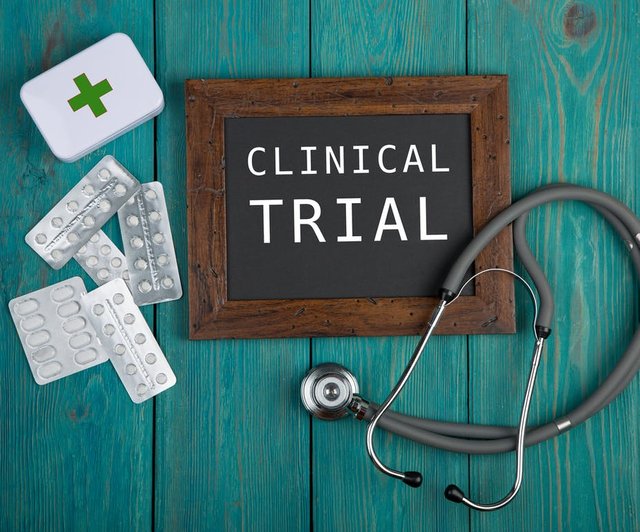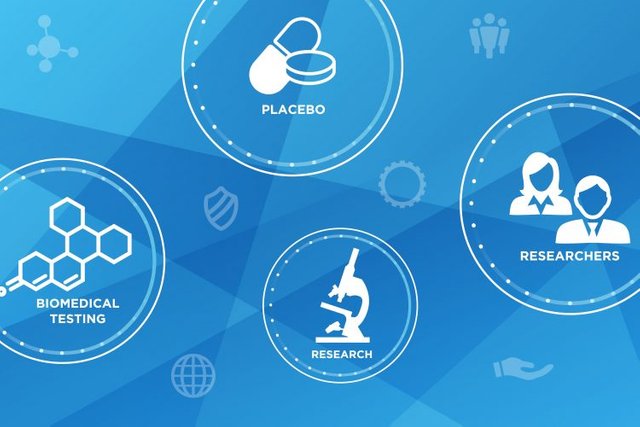Clinical trails
In 2020 begening of the pandemic people start to find the cure, for the viral pandemic vaccination is the only solution to stop pandemic , huge economically strong countries like USA UK India has begun to developing the vaccine for the ongoing viral pandemic for the people of planet earth, so with that we heard the terminology call "clinical trials" the longest steps of the vaccine development.in this article I am going to describe you about the clinical trials how it works? what is the clinical trial? what are the step? so by reading this you can get best idea to choose which one is the best vaccine for you developed vaccine data is available in the internet anyone can download and refer this data.

Developers of drugs, biologicals, and medical devices must ensure product safety, demonstrate medical benefit in people, and mass produce the product.
Preclinical development starts before clinical trials and the main goals are to determine safety and effectiveness of the intervention. Research may include pharmacodynamics, pharmacokinetics, absorption, distribution, metabolism and excretion studies, and toxicity testing. During preclinical studies, in vitro and in vivo testing is performed. Toxicity includes studies of which organs are targeted and long-term carcinogenic effects or effects on mammalian reproduction. Two species of animals are normally used in drug development studies. Choice is determined on which animal gives the best correlation to human studies.
Medical devices are usually studied in larger animal species. No Observed Adverse Effect Level (NOAEL), the level of exposure at which there is no biologically or statistically significant increase in the frequency or severity of any adverse effects in the exposed population when compared to its appropriate control, is established based on preclinical trials. These are used to determine initial Phase I clinical trial dosage levels on a mass active pharmaceutical ingredient (API) per mass patient basis.
If preclinical studies show that the therapy is safe and effective, clinical trials, defined as “scientifically controlled studies of the safety and effectiveness of a therapeutic agent using consenting human subjects”, are started.
The four possible outcomes are:
- the new treatment has a large beneficial effect and is superior to standard treatment;
- the new treatment is equivalent to standard treatment;
- the new treatment is neither clearly superior nor clearly inferior to standard treatment; or
- a new treatment is inferior to standard treatment.
The US Food and Drug Administration (FDA) role begins after preclinical evaluation for safety and effectiveness. These prospective studies are designed to answer specific questions about biomedical or behavioral interventions and must adhere to the principles of good clinical practices (GCP).
Randomized controlled trials (RCT) are the gold standard and are often used to evaluate the efficacy or effectiveness of various types of medical intervention and may provide information about adverse effects.
Classifications of RCT’s include
● study design (parallel-group, crossover, cluster, or factorial),
● outcome of interest (efficacy versus effectiveness),
● and evaluation of a hypothesis (superiority, noninferiority, or equivalence).
The people being studied are randomly allocated to one of the different treatments that are under study.
The ideal randomization process maximizes statistical power, minimizes selection bias, and minimizes allocation bias.

Clinical trial phases are steps in the research to determine if an intervention would be beneficial or detrimental to humans and include
● Phases 0-During Phase 0, pharmacodynamics and pharmacokinetics are determined
● Phase 1-Safety studies are evaluated during Phase I
● Phase II -efficacy.
● Phase III-confirmation of safety and efficacy
● Phase IV Sentry studies and comparative effectiveness research
● Phase V community-based research
Although this sounds easy and straightforward, definitions and purposes of the different phases become muddied and studies to determine if a therapy should be used in the general population of patients may be complex and results difficult to interpret. Clinical trials may go so wrong that unplanned changes in the population studied, end points or analysis plan must be made [20]. Understanding the basis of clinical trial phases will help researchers plan and implement clinical study protocols and, by doing so, improve the number of therapies coming to market for patients.
Pre-clinical studies
Pre-clinical studies involve in vitro (i.e., test tube or laboratory) studies and trials on animal populations. Wide ranging dosages of the study drug are given to the animal subjects or to an in-vitro substrate in order to obtain preliminary efficacy, toxicity and pharmacokinetic information and to assist pharmaceutical companies in deciding whether it is worthwhile to go ahead with further testing.

Phase 0
Phase 0 is a recent designation for exploratory, first-inhuman trials conducted in accordance with the U.S. Food and Drug Administration’s (FDA) 2006 Guidance on Exploratory Investigational New Drug (IND) Studies Phase 0 trials are designed to speed up the development of promising drugs or imaging agents by establishing very early on whether the drug or agent behaves in human subjects as was anticipated from preclinical studies. Distinctive features of Phase 0 trials include the administration of single sub therapeutic doses of the study drug to a small number of subjects (10 to 15) to gather preliminary data on the agent's pharmacokinetics (how the body processes the drug) and pharmacodynamics (how the drug works in the body).
Phase I
Phase I trials are the first stage of testing in human subjects. Normally, a small (20-80) group of healthy volunteers will be selected. This phase includes trials designed to assess the safety (pharmacovigilance), tolerability, pharmacokinetics, and pharmacodynamics of a drug. These trials are often conducted in an inpatient clinic, where the subject can be observed by full-time staff. The subject who receives the drug is usually observed until several half-lives of the drug have passed.
Phase I trials also normally include dose-ranging, also called dose escalation, studies so that the appropriate dose for therapeutic use can be found. The tested range of doses will usually be a fraction of the dose that causes harm in animal testing.
Phase I trials most often include healthy volunteers. However, there are some circumstances when real patients are used, such as patients who have end-stage disease and lack other treatment options. This exception to the rule most often occurs in oncology (cancer) and HIV drug trials. Volunteers are paid an inconvenience fee for their time spent in the volunteer centre. Pay ranges from a small amount of money for a short period of residence, to a larger amount of up to approx £4000 depending on length of participation.
There are different kinds of Phase I trials:
- SAD Single Ascending Dose studies are those in which small groups of subjects are given a single dose of the drug while they are observed and tested for a period of time. If they do not exhibit any adverse side effects, and the pharmacokinetic data is roughly in line with predicted safe values, the dose is escalated, and a new group of subjects is then given a higher dose. This is continued until precalculated pharmacokinetic safety levels are reached, or intolerable side effects start showing up at which point the drug is said to have reached the Maximum tolerated dose (MTD).
- MAD Multiple Ascending Dose studies are conducted to better understand the pharmacokinetics & pharmacodynamics of multiple doses of the drug.
Phase II
Once the initial safety of the study drug has been confirmed in Phase I trials, Phase II trials are performed on larger groups (20-300) and are designed to assess how well the drug works, as well as to continue Phase I safety assessments in a larger group of volunteers and patients. When the development process for a new drug fails, this usually occurs during Phase II trials when the drug is discovered not to work as planned, or to have toxic effects.
Phase II studies are sometimes divided into
● Phase IIA and
● Phase IIB.
Phase IIA is specifically designed to assess dosing requirements (how much drug should be given), whereas
Phase IIB is specifically designed to study efficacy (how well the drug works at the prescribed dose(s)). Some trials combine Phase I and Phase II, and test both efficacy and toxicity.

Phase III
Phase III studies are randomized controlled multicenter trials on large patient groups (300–3,000 or more depending upon the disease/medical condition studied) and are aimed at being the definitive assessment of how effective the drug is, in comparison with current 'gold standard' treatment. Because of their size and comparatively long duration, Phase III trials are the most expensive, time-consuming and difficult trials to design and run, especially in therapies for chronic medical conditions. It is common practice that certain Phase III trials will continue while the regulatory submission is pending at the appropriate regulatory agency.
While not required in all cases, it is typically expected that there be at least two successful Phase III trials, demonstrating a drug's safety and efficacy, in order to obtain approval from the appropriate regulatory agencies (FDA (USA), TGA (Australia), EMEA (European Union), etc.).
Once a drug has proved satisfactory after Phase III trials, the trial results are usually combined into a large document containing a comprehensive description of the methods and results of human and animal studies, manufacturing procedures, formulation details, and shelf life. This collection of information makes up the "regulatory submission" that is provided for review to the appropriate regulatory authoritiesin different countries.
Most drugs undergoing Phase III clinical trials can be marketed under FDA norms with proper recommendations and guidelines, but in case of any adverse effects being reported anywhere, the drugs need to be recalled immediately from the market. While most pharmaceutical companies refrain from this practice, it is not abnormal to see many drugs undergoing Phase III clinical trials in the market.
Phase IV
Phase IV trial is also known as Post Marketing Surveillance Trial. Phase IV trials involve the safety surveillance (pharmacovigilance) and ongoing technical support of a drug after it receives permission to be sold. Phase IV studies may be required by regulatory authorities or may be undertaken by the sponsoring company for competitive (finding a new market for the drug) or other reasons (for example, the drug may not have been tested for interactions with other drugs, or on certain population groups such as pregnant women, who are unlikely to subject themselves to trials). The safety surveillance is designed to detect any rare or long-term adverse effects over a much larger patient population and longer time period than was possible during the Phase I-III clinical trials. Harmful effects discovered by Phase IV trials may result in a drug being no longer sold, or restricted to certain uses.
Hope you guys got a basic idea about clinical trails. and we have to pray for world all the drug discovery got success and heal the world from this pandemic...
Thank you,
@dilshan96